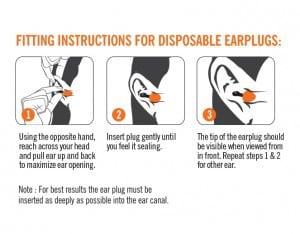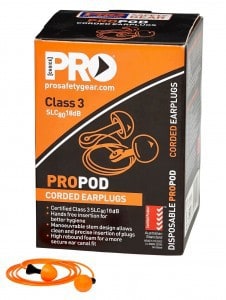Can you hear that?
Construction workers regularly experience noise levels up to six times the legal exposure limit and up to 75 per cent are developing tinnitus or permanent hearing loss as a result of their job.
These figures come from leading Australian audiologist, Dr Ross Dineen who has extensively studied hearing loss and tinnitus in the construction industry.
Dineen and his colleagues studied noise exposure levels in construction and analysed the way personal protective equipment (PPE) and protective approaches are used.
“Dosimeters measured the real-time exposure to noise and worker behaviour was monitored. Their total dose [of sound] over the working day averaged over six times the legal exposure limit,” Dineen said.
“Over 75 per cent of construction workers were experiencing hearing and communication problems,” he said, adding that this was based on hearing tests as well as feedback from family and friends.
Dineen said little has changed since his research and that noise induced hearing loss (NIHL) and tinnitus remain a serious issue in construction.
“There’s nothing really being done to address it,” he said.
Hearing Loss Increases PPE Aversion:
Reluctance to wearing PPE is a major cause of hearing loss in construction, according to Dineen, who said that hearing damage was compounding because as damage increases, so too does reluctance to wearing hearing protection.
“If you have a pre-existing hearing injury then conventional hearing protection reduces the ability to hear speech and warning sounds and it means many workers are not inclined to wear hearing protection at all,” Dineen said.
“We conducted some focus groups asking why people were engaging in these behaviours and their immediate concern was being well enough to go home that night. They regularly see people around them injured or killed.” With this in mind, he stressed the importance of preventing hearing loss early.
“The issue is to get people before they have injured their hearing when they can still hear while wearing conventional ear protection,” he said.
The Right Class of PPE to Encourage Use:
Product Development manager of Pro Choice Safety Gear, Brad Rodgers said the company’s new ProPod earplugs are a Class 3 decibel rating which encourages wear by providing hearing protection while still allowing wears to hear background noises such as an approaching forklift or co-worker communications.
“Class 5 (the highest level of hearing protection) is not always the best solution. There are different designs for different ratings and uses which should be matched to the application and risk,” Rodgers said.
The Propod earplugs also reduce the chance of ear infections, with finger-holds allowing workers to take them in and out them out without tainting the component that sits in the ear canal, according to Rodgers.
“Some people don’t clean their hands before rolling up ear plugs so they are using dirty fingers which can push bacteria in the ear and cause infections,” he said.
Tinnitus (Ringing in the Ears):
A common symptom of hearing damage is tinnitus, the clinical term for ringing, whistling or hissing in one or both ears. Tinnitus is not a ‘sound’ but is the noise of the auditory system as the brain tries to adjust for the hearing damage, according to Dineen.
“Tinnitus, initially is a warning sign that hearing damage is occurring,” Dineen said, adding that it is usually also combined with muffled hearing. “Your ear is dampening to try and protect itself. If you’re constantly working in a loud environment, that hearing loss doesn’t come back.”
He said symptoms of long term Tinnitus also include intolerance to some noises.
“Normal sounds that you could previous tolerate such as putting a cup on the bench or putting a saucepan in the sink becomes an unpleasant experience,” Dineen said.
“There is no cure for tinnitus however a hearing aid should reduce awareness of it.”
Training and education critical to prevention and diagnosis:
Dineen said that training and education is critical to ensuring workers can self-diagnose when hearing damage is occurring and therefore take appropriate protective measures.
“It’s really important that workers can identify the initial symptoms of hearing damage… recognition is often low until they get feedback from friends or family,” he said, adding that loud televisions or asking people to repeat themselves were obvious signs.
He suggested workers use the car radio for self-testing their hearing post shift as a simple method to test for short-term hearing loss.
1: When driving home after work, set the car radio at a ‘comfortable’ volume while driving home so that you have a comparison point the next morning.
Step 2: When driving to work the next day, if the volume is no longer ‘comfortable’ (e.g. it is too loud), it is an indication of short-term hearing damage the day before.
Read Pro Choice Safety Gear’s Workplace Hearing Protection Guide to learn more and view acceptable noise level guides for a range of tools.

